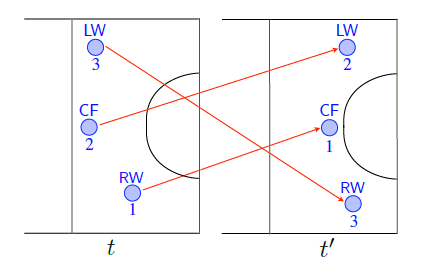Abstract

In this paper, we describe a method to represent and discover adversarial group behavior in a continuous domain. In comparison to other types of behavior, adversarial behavior is heavily structured as the location of a player (or agent) is dependent both on their teammates and adversaries, in addition to the tactics or strategies of the team. We present a method which can exploit this relationship through the use of a spatiotemporal basis model. As players constantly change roles during a match, we show that employing a “role-based” representation instead of one based on player “identity” can best exploit the playing structure. As vision-based systems currently do not provide perfect detection/tracking (e.g. missed or false detections), we show that our compact representation can effectively “denoise” erroneous detections as well as enabling temporal analysis, which was previously prohibitive due to the dimensionality of the signal. To evaluate our approach, we used a fully instrumented field-hockey pitch with 8 fixed high-definition (HD) cameras and evaluated our approach on approximately 200,000 frames of data from a state-of-the-art real-time player detector and compare it to manually labeled data.
Copyright Notice
The documents contained in these directories are included by the contributing authors as a means to ensure timely dissemination of scholarly and technical work on a non-commercial basis. Copyright and all rights therein are maintained by the authors or by other copyright holders, notwithstanding that they have offered their works here electronically. It is understood that all persons copying this information will adhere to the terms and constraints invoked by each author’s copyright. These works may not be reposted without the explicit permission of the copyright holder.